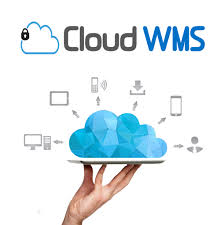Cloud Warehouse Management System: A Complete Guide

Strong 8k brings an ultra-HD IPTV experience to your living room and your pocket.
A Cloud Warehouse Management System (WMS) is a technology-driven solution that enables businesses to manage inventory, streamline warehouse operations, and improve supply chain efficiency using cloud-based software. Unlike traditional on-premise systems, cloud-based WMS offers flexibility, scalability, and real-time accessibility, making it an essential tool for modern logistics and e-commerce businesses.
In this article, we will explore the benefits, key features, implementation strategies, and best practices of cloud warehouse management systems.
What is a Cloud Warehouse Management System?
A Cloud Warehouse Management System is a software application hosted on remote servers that helps businesses track inventory, optimize storage, and manage warehouse processes efficiently. It eliminates the need for physical infrastructure and offers seamless integration with enterprise resource planning (ERP) systems, e-commerce platforms, and third-party logistics providers.
Key Benefits of a Cloud Warehouse Management System
Real-time Inventory Tracking
Provides accurate stock visibility across multiple locations.
Reduces the chances of overstocking or stockouts.
Cost-Effectiveness
Eliminates the need for expensive hardware and IT maintenance.
Offers a subscription-based pricing model, reducing upfront costs.
Scalability & Flexibility
Easily scales up or down based on business growth and demand fluctuations.
Suitable for small businesses, large enterprises, and 3PL providers.
Seamless Integration
Connects with ERP systems, e-commerce platforms, and shipping carriers.
Ensures smooth data synchronization and workflow automation.
Improved Accuracy & Efficiency
Reduces manual errors through automation and barcode scanning.
Enhances order fulfillment speed and warehouse productivity.
Enhanced Security & Data Backup
Cloud-based systems provide encrypted data protection and automatic backups.
Ensures compliance with industry security standards.
Key Features of a Cloud Warehouse Management System
Automated Inventory Management
Tracks stock movements, expiry dates, and reorder levels in real time.
Reduces stock discrepancies and enhances forecasting accuracy.
Order Management & Fulfillment
Streamlines order processing, picking, packing, and shipping workflows.
Integrates with online marketplaces and customer portals.
Barcode & RFID Support
Uses barcode scanning and RFID technology to improve data accuracy.
Speeds up stocktaking and item retrieval processes.
Multi-Warehouse & Multi-Location Support
Enables centralized management of multiple warehouses or distribution centers.
Optimizes inventory allocation across different locations.
Real-time Analytics & Reporting
Provides insights on inventory turnover, sales trends, and warehouse performance.
Generates automated reports for better decision-making.
Mobile & Remote Accessibility
Allows warehouse managers to access data from any location via smartphones or tablets.
Improves operational control and flexibility.
Industries That Benefit from Cloud WMS
1. E-Commerce & Retail
Ensures faster order fulfillment and accurate stock levels.
Integrates with online marketplaces like Amazon, eBay, and Shopify.
2. Manufacturing
Helps track raw materials, work-in-progress inventory, and finished goods.
Reduces production downtime by improving material availability.
3. Third-Party Logistics (3PL) Providers
Manages multiple clients' inventory under a single platform.
Offers real-time shipment tracking and automated billing.
4. Pharmaceutical & Healthcare
Ensures compliance with regulatory requirements (e.g., FDA, ISO standards).
Tracks temperature-sensitive inventory with precision.
5. Food & Beverage Industry
Maintains inventory freshness by tracking expiration dates and storage conditions.
Reduces waste and improves supply chain efficiency.
Implementing a Cloud Warehouse Management System
Step 1: Define Business Requirements
Identify key warehouse challenges and operational goals.
Determine the necessary features and integrations.
Step 2: Choose the Right Cloud WMS
Evaluate different software solutions based on usability, scalability, and cost.
Consider vendor reputation and customer support services.
Step 3: Integrate with Existing Systems
Ensure compatibility with ERP, accounting, and e-commerce platforms.
Configure APIs for seamless data exchange.
Step 4: Employee Training & Onboarding
Conduct hands-on training sessions for warehouse staff and managers.
Provide user manuals and support resources for smooth adoption.
Step 5: Monitor & Optimize Performance
Regularly analyze system performance and warehouse efficiency.
Implement improvements based on real-time analytics and feedback.
Best Practices for Effective Cloud WMS Implementation
Ensure Data Accuracy & Standardization
Use standardized SKU codes and product descriptions.
Maintain accurate data entry and update records in real time.
Automate Warehouse Processes
Utilize barcode/RFID technology to minimize manual efforts.
Implement automated alerts for stock replenishment and order processing.
Regular System Audits & Security Checks
Conduct periodic audits to ensure compliance and data integrity.
Implement multi-factor authentication and role-based access control.
Optimize Warehouse Layout & Workflow
Design an efficient layout to reduce travel time and improve productivity.
Use slotting optimization techniques to streamline picking and packing.
Leverage AI & Machine Learning
Use AI-driven demand forecasting for better inventory planning.
Implement predictive analytics for warehouse performance improvements.
Conclusion
A Cloud Warehouse Management System is a game-changing solution for businesses seeking real-time inventory control, cost savings, and operational efficiency. By leveraging cloud technology, companies can streamline warehouse processes, enhance accuracy, and scale their supply chain operations seamlessly.
Implementing the right cloud WMS with best practices can help businesses stay competitive in an increasingly digital and fast-paced market. Whether you are a retailer, manufacturer, or logistics provider, adopting cloud-based warehouse management will drive long-term success and efficiency.
Note: IndiBlogHub features both user-submitted and editorial content. We do not verify third-party contributions. Read our Disclaimer and Privacy Policyfor details.


